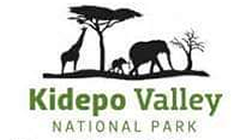The cattle-herding Karamojong occupy the north-east of Uganda, in an area covering one tenth of the country. Discover the unique culture of this remote tribe with the Lorukul Cultural Group, located just outside Kidepo Valley National Park.
The notorious, cattle-herding Karamojong occupy northeastern Uganda, in an area covering one tenth of the country. Discover the unique culture of this remote tribe with the Lorukul Cultural Group, located just outside Kidepo Valley National Park.
Their main livelihood is herding livestock, and the social and cultural importance will be explained as you walk with the guides to the traditional Karamojong manyattas (homesteads), granaries and cattle enclosures. Learn how the villagers make their distinctive beads, sample the local cuisine, and even meet the Karamojong King, who will narrate the tribe’s folklore and beliefs.
The fee for this tour has contributed to the construction of a clinic and the training of midwives – essential facilities in this isolated region.
Importance of Kidepo to Its Neighbors
Kidepo Valley Game National Park is good more so to the Karamojong People the Warrior – Nomads – the Karamoja region has often been called the Wild West of Uganda. Their Manyatta villages have really promoted them so much those the visits they get in this park hence making them get more international support to their region. When Uganda was a British Protectorate – they simply left this area alone. Their pride is their cattle and in the past cattle raids were the rule of the day.
Things have calmed down in recent years and the Karamojong have been disarmed and have become a lot more passive in nature. Cattle is still king, however subsistence farming has become a lot more common This is an arid region and people have to walk miles in order to find water, on the other hand at times there have been floods here wreaking havoc among the people who live here. This is a cultural visit that you will find most interesting and give you insights into Authentic Africa and in particular insights into the Karamojong People who live and who are related to the Maasai.
Local community are key stakeholders in ensuring the protection of wildlife both inside and outside Uganda’s protected areas. Traditional conservation approaches largely excluded the communities from protected area management. Community conservation, which has been employed since the 1990s, aims to harmonize the relationship between park managers and neighboring communities, allowing these communities access to protected area resources.
It also encourages dialogue and local community participation in planning for and management of these resources. Community Conservation Unit implements a number of activities including Conservation Education and Awareness which aims at raising awareness of the value of conservation and how communities can both participate in and benefit from it. In order to facilitate visits by school children and organized groups to some of the parks, low cost accommodation has been created to enable pupils to spend a weekend viewing and learning about wildlife.
The mountain people known as the IK people have benefited more in this. From the frequent visits to this tribe, many have enrolled in education for example their first girl graduated has been offered a job in Kampala hence putting their tribe on map. These experiences have made it good for them to stay near the national park. This really calls a Uganda safari to reach this park to find out how good is this park for the nearby communities and also go and enjoy their cultural encounters.
